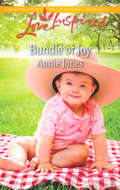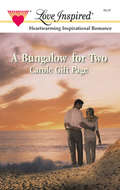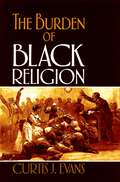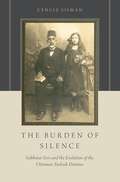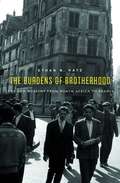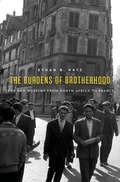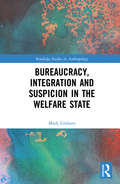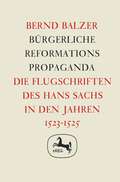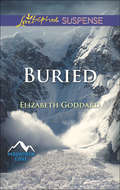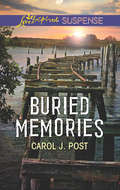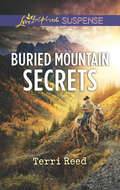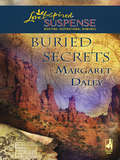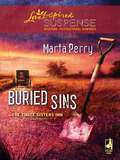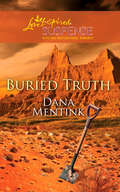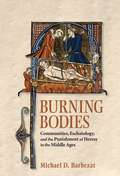- Table View
- List View
Bultmann Unlocked
by Tim LabronThe unique character of Rudolf Bultmann's thought has been missed by many traditional studies that cast him in exegetical or hermeneutic frameworks. His methods of source criticism and his concept of 'demythologizing' have led some to reject his thought in toto, others to label him as a subjectivist. Tim Labron steps out of such traditional studies by reading Bultmann as a unique scholar and leading to the keys that unlock the distinct character of Bultmann's thought, namely, John 1,14 and the principle of justification by faith. Bultmann uses them in a parallel function - to burn the traditional subject-object hierarchies and self-made foundations to the ground. Labron shows the implications this had for theology, religious studies and philosophy.
Bultmann Unlocked
by Tim LabronThe unique character of Rudolf Bultmann's thought has been missed by many traditional studies that cast him in exegetical or hermeneutic frameworks. His methods of source criticism and his concept of 'demythologizing' have led some to reject his thought in toto, others to label him as a subjectivist. Tim Labron steps out of such traditional studies by reading Bultmann as a unique scholar and leading to the keys that unlock the distinct character of Bultmann's thought, namely, John 1,14 and the principle of justification by faith. Bultmann uses them in a parallel function - to burn the traditional subject-object hierarchies and self-made foundations to the ground. Labron shows the implications this had for theology, religious studies and philosophy.
A Bumper Book of Christmas Jokes
by Macmillan Children's BooksWhy is it so cold at Christmas? Because it’s Decembrrrrr!What do elves use to make Christmas cakes? Elf-raising flour!What’s miserable and covered in custard? Apple grumble!Packed full of seasonal silliness and funny festive jokes that will keep you laughing for days – and that's sno joke! From Christmas jokes to food jokes, dinosaur jokes to pirate jokes, these laugh-out-loud one-liners are just the sort that you'd find in Christmas crackers.The perfect stocking filler, A Bumper Book of Christmas Jokes is decorated with humourous black and white line drawings and packed with hundreds of hilarious jokes about all sort of topics.
The Bundahi%sn: The Zoroastrian Book of Creation
by Domenico Agostini Samuel Thrope Shaul Shaked Guy StroumsaThe Bundahisn, meaning primal or foundational creation, is the central Zoroastrian account of creation, cosmology, and eschatology. Compiled sometime in the ninth century CE, it is one of the most important surviving testaments to Zoroastrian literature in the Middle Persian language and to pre-Islamic Iranian culture. Despite having been composed some two millennia after the Prophet Zoroaster's revelation, it is nonetheless a concise compendium of ancient Zoroastrian knowledge that draws on and reshapes earlier layers of the tradition. Well known in the field of Iranian Studies as an essential primary source for scholars of ancient Iran's history, religions, literatures, and languages, the Bundahisn is also a great work of literature in and of itself, ranking alongside the creation myths of other ancient traditions. The book's thirty-six diverse chapters, which touch on astronomy, eschatology, zoology, medicine, and more, are composed in a variety of styles, registers, and genres, from spare lists and concise commentaries to philosophical discourses and poetic eschatological visions. This new translation, the first in English in nearly a century, highlights the aesthetic quality, literary style, and complexity and raises the profile of pre-Islamic Zoroastrian literature.
The Bundahi%sn: The Zoroastrian Book of Creation
by Domenico Agostini Samuel Thrope Shaul Shaked Guy StroumsaThe Bundahisn, meaning primal or foundational creation, is the central Zoroastrian account of creation, cosmology, and eschatology. Compiled sometime in the ninth century CE, it is one of the most important surviving testaments to Zoroastrian literature in the Middle Persian language and to pre-Islamic Iranian culture. Despite having been composed some two millennia after the Prophet Zoroaster's revelation, it is nonetheless a concise compendium of ancient Zoroastrian knowledge that draws on and reshapes earlier layers of the tradition. Well known in the field of Iranian Studies as an essential primary source for scholars of ancient Iran's history, religions, literatures, and languages, the Bundahisn is also a great work of literature in and of itself, ranking alongside the creation myths of other ancient traditions. The book's thirty-six diverse chapters, which touch on astronomy, eschatology, zoology, medicine, and more, are composed in a variety of styles, registers, and genres, from spare lists and concise commentaries to philosophical discourses and poetic eschatological visions. This new translation, the first in English in nearly a century, highlights the aesthetic quality, literary style, and complexity and raises the profile of pre-Islamic Zoroastrian literature.
Bündnissolidarität und ihre friedensethischen Kontroversen: Fragen zur Gewalt • Band 4 (Gerechter Frieden)
by Ines-Jacqueline Werkner Michael HaspelDie bundesdeutsche Außen-, Sicherheits- und Verteidigungspolitik ist angesichts historischer Erfahrungen durch eine Kultur der militärischen Zurückhaltung geprägt. Zugleich setzt sie auf Integration, Westbindung und einen Multilateralismus. Haben sich diese Prämissen über Jahrzehnte bewährt, scheinen sie nun zunehmend in Widerspruch zueinander zu treten. Der Afghanistaneinsatz hat diese Spannung zwischen Bedenken gegenüber militärischen Interventionen und geforderter Solidarität mit den Bündnispartnern offen zutage befördert. Aber auch die deutsche Enthaltung im Falle der Libyen-Resolution zeigte Normdifferenzen auf. Deutschland habe sich – so die Kritik – damit gegen seine westlichen Verbündeten gestellt und einen Fehler von historischer Dimension begangen. Die Autorinnen und Autoren dieses Bandes nehmen diese Kontroversen zum Anlass, die Handlungsmaxime der Bündnissolidarität aus verschiedenen Perspektiven zu beleuchten und friedensethisch im Lichte des Leitbildes des gerechten Friedens zu reflektieren.
Bunker: Building for the End Times
by Bradley GarrettToday, the bunker has become the extreme expression of our greatest fears: from pandemics to climate change and nuclear war. And once you look, it doesn't take long to start seeing bunkers everywhere.In Bunker, acclaimed urban explorer and cultural geographer Bradley Garrett explores the global and rapidly growing movement of 'prepping' for social and environmental collapse, or 'Doomsday'. From the 'dread merchants' hustling safe spaces in the American mid-West to eco-fortresses in Thailand, from geoscrapers to armoured mobile bunkers, Bunker is a brilliant, original and never less than deeply disturbing story from the frontlines of the way we live now: an illuminating reflection on our age of disquiet and dread that brings it into new, sharp focus.The bunker, Garrett shows, is all around us: in malls, airports, gated communities, the vehicles we drive. Most of all, he shows, it's in our minds.
The Burden of Black Religion
by Curtis J. EvansReligion has always been a focal element in the long and tortured history of American ideas about race. In The Burden of Black Religion, Curtis Evans traces ideas about African American religion from the antebellum period to the middle of the twentieth century. Central to the story, he argues, was the deep-rooted notion that blacks were somehow "naturally" religious. At first, this assumed natural impulse toward religion served as a signal trait of black people's humanity -- potentially their unique contribution to American culture. Abolitionists seized on this point, linking black religion to the black capacity for freedom. Soon, however, these first halting steps toward a multiracial democracy were reversed. As Americans began to value reason, rationality, and science over religious piety, the idea of an innate black religiosity was used to justify preserving the inequalities of the status quo. Later, social scientists -- both black and white -- sought to reverse the damage caused by these racist ideas and in the process proved that blacks were in fact fully capable of incorporation into white American culture. This important work reveals how interpretations of black religion played a crucial role in shaping broader views of African Americans and had real consequences in their lives. In the process, Evans offers an intellectual and cultural history of race in a crucial period of American history.
The Burden of Black Religion
by Curtis J. EvansReligion has always been a focal element in the long and tortured history of American ideas about race. In The Burden of Black Religion, Curtis Evans traces ideas about African American religion from the antebellum period to the middle of the twentieth century. Central to the story, he argues, was the deep-rooted notion that blacks were somehow "naturally" religious. At first, this assumed natural impulse toward religion served as a signal trait of black people's humanity -- potentially their unique contribution to American culture. Abolitionists seized on this point, linking black religion to the black capacity for freedom. Soon, however, these first halting steps toward a multiracial democracy were reversed. As Americans began to value reason, rationality, and science over religious piety, the idea of an innate black religiosity was used to justify preserving the inequalities of the status quo. Later, social scientists -- both black and white -- sought to reverse the damage caused by these racist ideas and in the process proved that blacks were in fact fully capable of incorporation into white American culture. This important work reveals how interpretations of black religion played a crucial role in shaping broader views of African Americans and had real consequences in their lives. In the process, Evans offers an intellectual and cultural history of race in a crucial period of American history.
The Burden of Silence: Sabbatai Sevi and the Evolution of the Ottoman-Turkish Dönmes
by Cengiz SismanThe Burden of Silence is the first monograph on Sabbateanism, an early modern Ottoman-Jewish messianic movement, tracing it from its beginnings during the seventeenth century up to the present day. Initiated by the Jewish rabbi Sabbatai Sevi, the movement combined Jewish, Islamic, and Christian religious and social elements and became a transnational phenomenon, spreading througout Afro-Euroasia. When Ottoman authorities forced Sevi to convert to Islam in 1666, his followers formed messianic crypto-Judeo-Islamic sects, Dönmes, which played an important role in the modernization and secularization of Ottoman and Turkish society and, by extension, Middle Eastern society as a whole. Using Ottoman, Jewish, and European sources, Sisman examines the dissemination and evolution of Sabbeateanism in engagement with broader topics such as global histories, messianism, mysticism, conversion, crypto-identities, modernity, nationalism, and memory. By using flexible and multiple identities to stymie external interference, the crypto-Jewish Dönmes were able to survive despite persecution from Ottoman authorities, internalizing the Kabbalistic principle of a "burden of silence" according to which believers keep their secret on pain of spiritual and material punishment, in order to sustain their overtly Muslim and covertly Jewish identities. Although Dönmes have been increasingly abandoning their religious identities and embracing (and enhancing) secularism, individualism, and other modern ideas in the Ottoman Empire and modern Turkey since the nineteenth century, Sisman asserts that, throughout this entire period, religious and cultural Dönmes continued to adopt the "burden of silence" in order to cope with the challenges of messianism, modernity, and memory.
The Burden of Silence: Sabbatai Sevi and the Evolution of the Ottoman-Turkish Dönmes
by Cengiz SismanThe Burden of Silence is the first monograph on Sabbateanism, an early modern Ottoman-Jewish messianic movement, tracing it from its beginnings during the seventeenth century up to the present day. Initiated by the Jewish rabbi Sabbatai Sevi, the movement combined Jewish, Islamic, and Christian religious and social elements and became a transnational phenomenon, spreading througout Afro-Euroasia. When Ottoman authorities forced Sevi to convert to Islam in 1666, his followers formed messianic crypto-Judeo-Islamic sects, Dönmes, which played an important role in the modernization and secularization of Ottoman and Turkish society and, by extension, Middle Eastern society as a whole. Using Ottoman, Jewish, and European sources, Sisman examines the dissemination and evolution of Sabbeateanism in engagement with broader topics such as global histories, messianism, mysticism, conversion, crypto-identities, modernity, nationalism, and memory. By using flexible and multiple identities to stymie external interference, the crypto-Jewish Dönmes were able to survive despite persecution from Ottoman authorities, internalizing the Kabbalistic principle of a "burden of silence" according to which believers keep their secret on pain of spiritual and material punishment, in order to sustain their overtly Muslim and covertly Jewish identities. Although Dönmes have been increasingly abandoning their religious identities and embracing (and enhancing) secularism, individualism, and other modern ideas in the Ottoman Empire and modern Turkey since the nineteenth century, Sisman asserts that, throughout this entire period, religious and cultural Dönmes continued to adopt the "burden of silence" in order to cope with the challenges of messianism, modernity, and memory.
The Burdens of Brotherhood: Jews and Muslims from North Africa to France
by Ethan B. KatzWinner of the J. Russell Major Prize, American Historical Association Winner of the David H. Pinkney Prize, Society for French Historical Studies Winner of the JDC–Herbert Katzki Award, National Jewish Book AwardsWinner of the American Library in Paris Book Award A Choice Outstanding Academic Title of the Year Headlines from France suggest that Muslims have renewed an age-old struggle against Jews and that the two groups are once more inevitably at odds. But the past tells a different story. The Burdens of Brotherhood is a sweeping history of Jews and Muslims in France from World War I to the present. “Katz has uncovered fascinating stories of interactions between Muslims and Jews in France and French colonial North Africa over the past 100 years that defy our expectations…His insights are absolutely relevant for understanding such recent trends as rising anti-Semitism among French Muslims, rising Islamophobia among French Jews and, to a lesser degree, rising rates of aliyah from France.” —Lisa M. Leff, Haaretz “Katz has written a compelling, important, and timely history of Jewish/Muslim relations in France since 1914 that investigates the ways and venues in which Muslims and Jews interacted in metropolitan France…This insightful, well-researched, and elegantly written book is mandatory reading for scholars of the subject and for those approaching it for the first time.” —J. Haus, Choice
The Burdens of Brotherhood: Jews and Muslims from North Africa to France
by Ethan B. KatzWinner of the J. Russell Major Prize, American Historical Association Winner of the David H. Pinkney Prize, Society for French Historical Studies Winner of the JDC–Herbert Katzki Award, National Jewish Book AwardsWinner of the American Library in Paris Book Award A Choice Outstanding Academic Title of the Year Headlines from France suggest that Muslims have renewed an age-old struggle against Jews and that the two groups are once more inevitably at odds. But the past tells a different story. The Burdens of Brotherhood is a sweeping history of Jews and Muslims in France from World War I to the present. “Katz has uncovered fascinating stories of interactions between Muslims and Jews in France and French colonial North Africa over the past 100 years that defy our expectations…His insights are absolutely relevant for understanding such recent trends as rising anti-Semitism among French Muslims, rising Islamophobia among French Jews and, to a lesser degree, rising rates of aliyah from France.” —Lisa M. Leff, Haaretz “Katz has written a compelling, important, and timely history of Jewish/Muslim relations in France since 1914 that investigates the ways and venues in which Muslims and Jews interacted in metropolitan France…This insightful, well-researched, and elegantly written book is mandatory reading for scholars of the subject and for those approaching it for the first time.” —J. Haus, Choice
Bureaucracy, Integration and Suspicion in the Welfare State (Routledge Studies in Anthropology)
by Mark GrahamThis book explores how the often well-meaning routines and assumptions of a generous welfare state can reflect and even contribute to the stigmatisation of refugees and Muslims in Europe today. While the main cases are from Sweden, examples are included from the UK, France, Switzerland, Germany and the Netherlands. Mark Graham examines how suspicion is woven into the fabric of welfare bureaucracies with potential adverse consequences for the people they serve. He complicates our understanding of what Islamophobia means, and how it is expressed and created, by exploring contexts in which the logic of "othering" Muslims operates, but where explicit Islamophobia itself is absent. The book starts with Swedish public-sector bureaucracies and attempts by staff to make sense of Muslim refugee clients with categories and models that reappear in wider society. It goes on to explore the logic of integration policies, official concepts of culture, Swedish multiculturalism, educational strategies in schools, and debates surrounding "genuine" and "false" refugees. In all cases, the homologies between these different socio-cultural domains are explored.
Bureaucracy, Integration and Suspicion in the Welfare State (Routledge Studies in Anthropology)
by Mark GrahamThis book explores how the often well-meaning routines and assumptions of a generous welfare state can reflect and even contribute to the stigmatisation of refugees and Muslims in Europe today. While the main cases are from Sweden, examples are included from the UK, France, Switzerland, Germany and the Netherlands. Mark Graham examines how suspicion is woven into the fabric of welfare bureaucracies with potential adverse consequences for the people they serve. He complicates our understanding of what Islamophobia means, and how it is expressed and created, by exploring contexts in which the logic of "othering" Muslims operates, but where explicit Islamophobia itself is absent. The book starts with Swedish public-sector bureaucracies and attempts by staff to make sense of Muslim refugee clients with categories and models that reappear in wider society. It goes on to explore the logic of integration policies, official concepts of culture, Swedish multiculturalism, educational strategies in schools, and debates surrounding "genuine" and "false" refugees. In all cases, the homologies between these different socio-cultural domains are explored.
Buried: Under The Lawman's Protection Buried Calculated Risk (Mountain Cove #1)
by Elizabeth GoddardNOWHERE TO HIDE
Buried Memories: Undercover Protector Buried Memories Concealed Identity (Mills And Boon Love Inspired Suspense Ser.)
by Carol J. PostFORGOTTEN PAST
Buried Mountain Secrets: Amish Haven Buried Mountain Secrets Innocent Target (Mills And Boon Love Inspired Suspense Ser.)
by Terri ReedNowhere to run. Nowhere to hide. Can they get off the mountain alive?
Buried Sins (The Three Sisters Inn #3)
by Marta PerryWANTED: DEAD OR ALIVE Had her brand-new husband been involved in something shady? Before Caroline Hampton could confront him, he was killed in a car crash…or so it was claimed. Unsettling incidents–escalating in dange–warned her he could be very much alive. And so Caroline fled for the safety of her sisters' Amish country inn.
Buried Truth (Mills And Boon Love Inspired Suspense Ser.)
by Dana Mentink“COMING FOR YOU. ” A note, impaled by a knife on Bill Cloudman’s door, tells the former tribal agent a murderer has escaped. The vicious madman who murdered Bill’s partner—and cost Bill the community’s trust and his job—is on the loose in the South Dakota badlands again. Bill vows to put him behind bars once and for all.
Burning Bodies: Communities, Eschatology, and the Punishment of Heresy in the Middle Ages
by Michael D. BarbezatBurning Bodies interrogates the ideas that the authors of historical and theological texts in the medieval West associated with the burning alive of Christian heretics. Michael Barbezat traces these instances from the eleventh century until the advent of the internal crusades of the thirteenth century, depicting the exclusionary fires of hell and judicial execution, the purifying fire of post-mortem purgation, and the unifying fire of God's love that medieval authors used to describe processes of social inclusion and exclusion.Burning Bodies analyses how the accounts of burning heretics alive referenced, affirmed, and elaborated upon wider discourses of community and eschatology. Descriptions of burning supposed heretics alive were profoundly related to ideas of a redemptive Christian community based upon a divine, unifying love, and medieval understandings of what these burnings could have meant to contemporaries cannot be fully appreciated outside of this discourse of communal love. For them, human communities were bodies on fire. Medieval theologians and academics often described the corporate identity of the Christian world as a body joined together by the love of God. This love was like a fire, melting individuals together into one whole. Those who did not spiritually burn with God's love were destined to burn literally in the fires of Hell or Purgatory, and the fires of execution were often described as an earthly extension of these fires. Through this analysis, Barbezat demonstrates how presentations of heresy, and to some extent actual responses to perceived heretics, were shaped by long-standing images of biblical commentary and exegesis. He finds that this imagery is more than a literary curiosity; it is, in fact, a formative historical agent.




